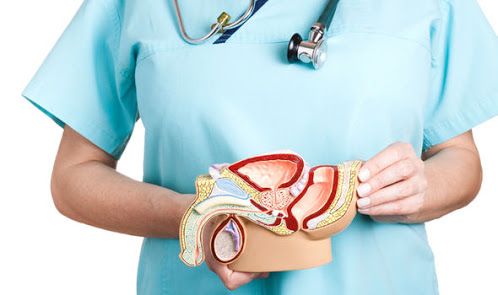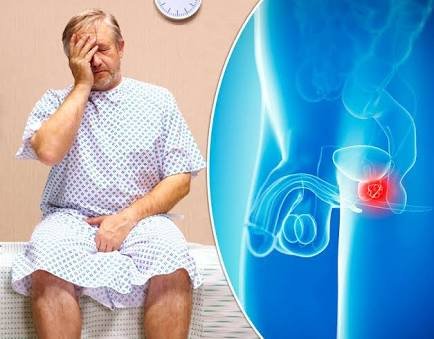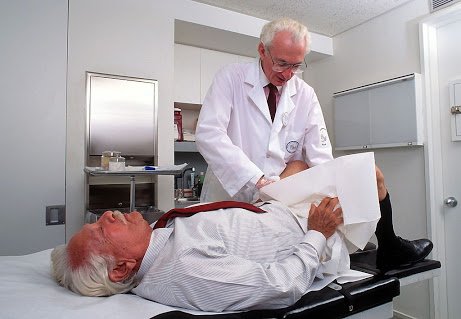What you should know about your Prostate📝
The prostate gland is an essential part of the reproductive system of the male. It's about 18-26grams in weight and it secretes prostatic fluid which is a thin, milky, alkaline fluid and forms about 30% of the total semen of a man.
.jpg)
FUNCTIONS OF THE PROSTATIC FLUID
1. Maintenance of a conducive pH for sperm motility: The human sperm cell has been found to be nonmotile in a pH of <6.0. Whereas the pH of the vagina is very acidic with a pH of about 3.0-4.5, meant to keep it safe from opportunistic microorganisms. Without the prostatic fluid in the semen this harsh environment will kill all the sperm cells and wouldn't allow their migration to the Fallopian tube where fertilization should occur.
2. Clotting of Semen: The clotting enzymes present in the prostatic fluid converts fibrinogen from the seminal vesicles; a gland that produces secretions to nourish the sperm cells, into a substance necessary for holding up the sperm cells in the uterine cervix called the coagulum.
3. Breakdown of the formed coagulum: This becomes necessary to enable the sperm cells migrate to the Fallopian tube for fertilization.
DISEASES OF THE PROSTATE
The diseases of the prostate includes;
Benign Prostatic Hyperplasia
Malignant transformation of the prostate popularly known as Cancer of the prostate (caP)
The commonest of the above being the former; Benign Prostatic Hyperplasia.
BENIGN PROSTATIC HYPERPLASIA (BPH)
This is a benign transformation of the prostate gland in which it becomes enlarged. It lacks any feature of a malignant tumour "cancer" but reduces the quality of life drastically. It's commoner in people (males) of the age of 40 and above.
.jpg)
ETIOLOGY
It's etiology is not known yet but is linked with excessive exposure to high levels of steroids. Because of this individuals who indulge in the indiscriminate use of steroids such as in body building are at risk of it at a much earlier age.
This is so because the prostate gland grows with the aid of the fueling product of these steroids known as dihydrotestosterone (DHT).
Also, studies have shown that those who indulge in sexual intercourse often are less at risk of it. Reasons being that, they reduce their testosterone levels all the time and give little or no room for its conversion into dihydrotestosterone (DHT) which is what fuels the enlargement of the prostate.
EARLY SIGNS OF BPH
The early signs includes;
- Frequency of urinating : The individual urinates more than he used to. A good example is if he normally urinates 3times a day, he might become 5 or 6 times per day.
- Urgency : Here there is this feeling of going to the toilet to urinate very quickly that can not be delayed.
- Nocturia : This is when an individual wakes up more than about 5times or more at night to urinate as opposed to what it used to be.
- Weak urine stream : Here the urine stream is not strong enough and can't be projected far.
- Incomplete emptying of the bladder : After urinating, there is a feeling that some urine is still left in the bladder.
- Straining : The individual makes conscious effort to urinate by increasing his intraabdominal pressure i. e pressure on the inside of him, so as to push out the urine on the inside out through the penis
- Hesitancy : This is when the individual begins to urinate and there is no urine coming out in the presence of enough urine in the bladder.
.jpg)
These are the major features that may suggest an enlarged prostate.
WHAT TO DO WHEN I NOTICE ANY OF THEM
My advice is this; If you have noticed any of these long enough, you don't have to remain silent about this but rather you need to be treated and put in a better condition so as to avoid the aftermath complications. Therefore upon the occurrence of the above stated symptoms quickly go to a certified and accredited hospital for check up where a urologist would see you and help you get better.
.jpg)
WHAT ARE THE COMPLICATIONS?
These includes;
- Recurrent acute urinary retention
- Chronic urinary retention
- Recurrent urinary tract infections
- Hydroureter
- Hydronephrosis
- Pyelonephritis
- Extravasation of urine into the abdominal cavity called the watery can peritoneum
- Peritonitis resulting from number 7
- Malignant transformation of the enlarged prostate (cancer of the prostate, caP)
.jpg)
Either way each of the complications can reduce the quality of life and could even lead to death if not treated cautiously.
You may think you are a female and do not need to know about this, but do you know knowledge is power and that you can actually save people's lives by knowing what this post has in store.
You never can tell, your Dad, uncle, cousin, brother, nephew or friends might not know what you just learnt now. So do well to pass this message on to others and help improve the quality of life as well as save lives.
Watch out for more post on your health and you.

With Love from,
Gospel.
Congratulations! This post has been upvoted from the communal account, @minnowsupport, by golevite from the Minnow Support Project. It's a witness project run by aggroed, ausbitbank, teamsteem, theprophet0, and someguy123. The goal is to help Steemit grow by supporting Minnows and creating a social network. Please find us in the Peace, Abundance, and Liberty Network (PALnet) Discord Channel. It's a completely public and open space to all members of the Steemit community who voluntarily choose to be there.
If you like what we're doing please upvote this comment so we can continue to build the community account that's supporting all members.
Thanks
Thankyou for that information.
You are much Welcome